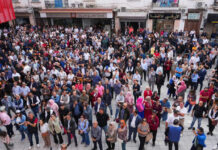More than 21 million people across Sudan are enduring severe hunger, according to the latest Integrated Food Security Phase Classification (IPC) report, marking the world’s largest food crisis.
The analysis confirms famine conditions in El Fasher, North Darfur, and in Kadugli, South Kordofan, where families are trapped and surviving on leaves, animal feed and grass.
Around 375,000 people are facing catastrophic levels of hunger, one step away from starvation. The findings were reviewed and confirmed by the IPC’s independent Famine Review Committee, which measures hunger severity on a five-point scale, with Phase Five denoting famine.
El Fasher has become the epicentre of Sudan’s collapse. After the Rapid Support Forces militia seized the city last week, hundreds of civilians, including aid workers, were killed. The city remains sealed off, with food, medicine and relief supplies blocked despite repeated appeals from the United Nations.
The UN’s humanitarian office, OCHA, described the obstruction of aid as unacceptable and demanded immediate access for convoys. Nearly 71,000 people have fled El Fasher and surrounding areas since late October, according to the International Organization for Migration.
Many report killings, abductions and sexual violence during their escape.
In nearby Tawila, where many have sought refuge, families sleep in the open, food stocks are nearly gone, and clean water is scarce. Violence has also surged in Kordofan, forcing tens of thousands to flee. Last week missile strikes in Kadugli killed at least eight children, UNICEF reported.
Denise Brown, the UN’s Humanitarian Coordinator in Sudan, called the situation catastrophic for civilians cut off from assistance and facing hunger on a massive scale.
With only 28 per cent of the UN’s 4.16 billion dollar humanitarian plan funded, agencies warn that without a ceasefire and massive aid surge, millions more could starve.



















